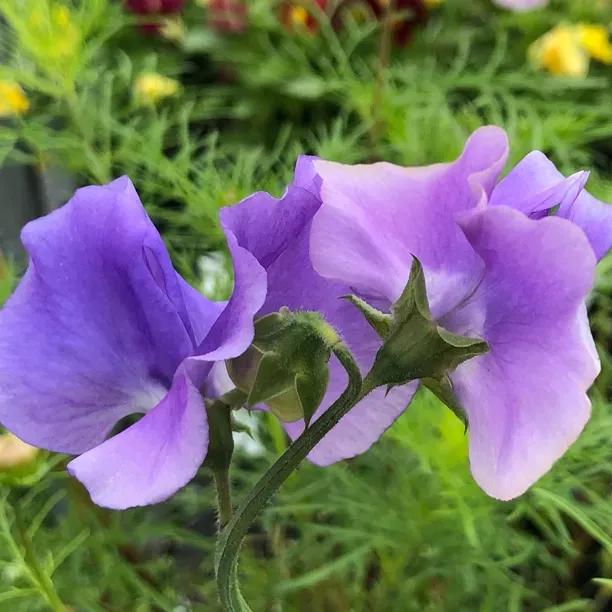Our Harry Sweet Pea Seedlings
The details
- Colour: lavender blue
- Stem: long
- Height: 2m
- Type: Spencer
- Scent: good
- Flowering: May to September
- Planting Months: March-June
Recommended extras
Description
Our Harry Sweet Peas
Lathyrus odoratus Our Harry is a beautifully scented annual sweet pea that's proved extremely popular over the 30-odd years since its introduction, Our Harry has ruffled petals in a delightful shade of lavender blue that fades to paler mauve at the edges. It's a gorgeous cottage garden classic, with heaps of charm and a lovely fragrance – not as strong as some heirloom varieties but delicious nevertheless – and good strong, long stems on a plant that grows to around 2m high. It's an essential addition to our range of sweet pea seedlings.
Our Sweet Peas are delivered in purpose-designed, recycled cardboard packaging, and are ready to be planted out when you get them.
We generally send them out between March and May, but we will email you with the likely delivery timescale once you have placed your order.
Features
- Colour: lavender blue, fading at the tips
- Stem: long
- Height: 2m
- Type: Spencer
- Scent: good
- Flowering: June to September (in our garden in 2018 it was still in flower in late October)
- Planting Months: March-June
Growing
For a beautiful scented combination, you could try growing him up a pergola or trellis alongside a fragrant pink rose, or pure white Iceberg. The sky blue tones of this sweet pea would make for a heavenly cool-colour combination with the whites and pinks. Remember, sweet peas are brilliant for picking indoors, and a multi-coloured bouquet can be stunning. So grow a few different varieties – try Anniversary, whose pale pink, lavender-tinged petals will complement Our Harry wonderfully, deep claret King Edward VII, for a brave contrast, and richly scented white Mrs Collier. A strong-growing sweet pea that will last really well in a vase, for longevity pick when there are at least two unopened flowers at the tip.
Did You Know?
Raised by F G Davies and introduced by Marchant in 1987, it has been described as 'faultless'.
Cultivation Instructions
Plant Our Harry Sweet Peas in well prepared, moist soil that ideally has been improved with organic matter. Erect supports for the peas to climb up before planting. They can also be planted in pots of sufficient size - allow 6 litres per plant - and with an ideal planting medium of 50% compost, 40 %top soil and 10% well-rotted manure. General purpose compost will do however but produces fewer flowers.
Our Harry can be grown in a container, as long as it is large enough - allow at least 5 litres per plant - and they are kept well fed and watered, as sweet peas are famously thirsty and greedy. Make sure they get plenty of water and potassium (potash) rich plant food, such as tomato fertiliser.
The principal requirement is enough water - Sweet Peas are thirsty and hungry plants. They can cope with a little shade but flower better in full sun.
Space each plant about 30 cm apart and about 5 cm from its support. The hole should be deep enough to accommodate the longest root and the soil should come up to the level of the first side shoot. Use wire/netting/twine between the supports so that the Sweet Pea can climb naturally. You will still need to tie them into the frame. They grow fast, so check every ten days or so.
Water well; the soil around sweet peas should never dry out. As the flowers develop pick them and keep on picking, otherwise they start to form seedpods and will stop flowering altogether. Keep tying in and picking for as long as you can. Perfectionists will remove the curling tendrils which grip other stems and can result in flowers with wiggly stems and also will remove side shoots. see the website for more advice on training sweetpeas.
, By all means, apply a high potash and phosphate fertiliser during the growing season. (Sweet Peas actually fix nitrogen from the air into the soil so you don't need more of that.) Home-made comfrey liquid is perfect or Tomorite will do especially if you are on a sandy soil.


